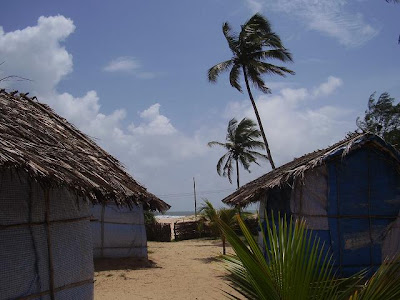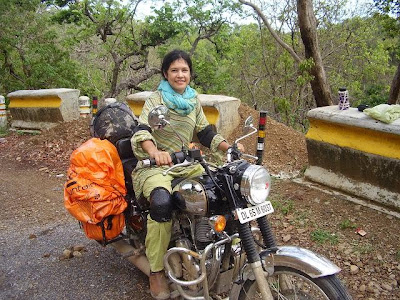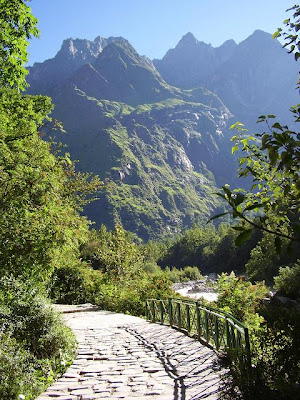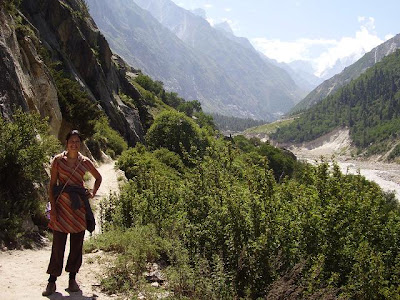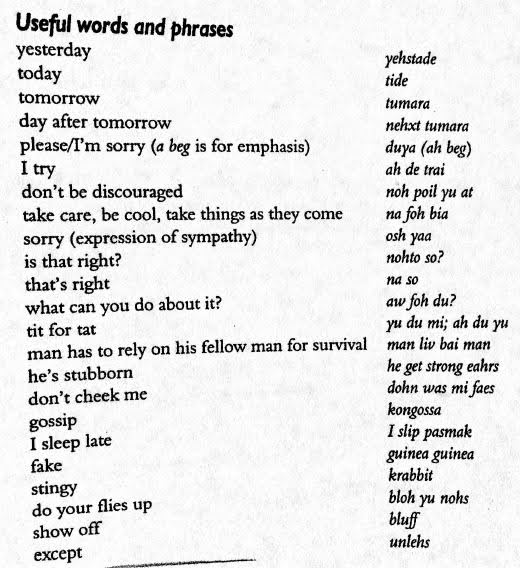India is a busy place, anything you need to buy or sell is possible, just find your local specialist or 'wallah'. Need a cup of tea? find the chai-wallah. got a flat? tyre-wallah. hungry? samoosa-wallah...so we're the travel-wallahs specialising in travelling this year.
We arrived in Bangalore on the 17 June smack-bang into one of India's big, busy, polluted and noisy, noisy, noisy cities. But we were exhausted enough to just pass out when we got to the hotel, despite the constant city din: the sound of hooters, loud street conversations, things (not sure what) banging in our hotel all night long. Having side mirrors on your vehicle is not compulsory but having a super-loud horn, that is in constant use, is.
Still in get up and go mode from our previous lives, we set off the very next day to find the Enfield motorcycle showroom. We wanted a new bike to give ourselves the best chance of survival on the crazy Indian roads we'd been warned about. And since neither of us has ever owned (or even driven) a bike before, we figured best try and reduce the potential for breakdowns, at least, with a brand new bike.
So we arrived at the Enfield showroom, credit card in hand, ready to scoot off with our new purchase - but it was not to be. We had our first encounter with Indian bureaucracy - in order to buy any new vehicle, a permanent Indian home address, work address and permission from the Police Commissioner are required. A little research on the internet and we found our answer: Lalli Singh. He did long-term leases on motobikes for foreigners but he was in Delhi, a long way from Bangalore. We decided to head that way but break the journey halfway in Goa and at least get some holiday time for a start! During our lunch soujourn in the park in an attempt to escape the exhausting hustle and bustle of the city and to plan our journey, we met some guys from the Kinder caste who smacked us about the heads with their dupatta scarves, muttered something that was apparently a blessing and demanded money from us. Kinder are transvestites, who are supposed to be hermaphrodites, and who demand cash in exchange for blessings. It's very bad luck to refuse them and if they pitch up at weddings, they make big bucks from families wanting to avoid evil vibes.
Having decided to postpone the bike mission to Delhi, there was no reason to hang around in Bangalore any longer. So we left Bangalore that same evening on the overnight bus to Gorkana, a beach village outside of Goa. The overnight buses are sleeper buses so we got a proper double bed and the journey was relatively painless. Gorkana was a disappointment though; the beaches are polluted, full of plastic litter and the water is uninviting. On the second night, we met two lovely Indian guys, Mishrah and Neeraj, who were on their way to Goa the following day and offered us a lift there. On the 3 hour drive we quizzed them on everything from acceptable tipping practice to caste conventions and arranged marriages. They introduced us to Idli, a breakfast rice cake dish and a variety of delicious lunch and dinner options we may have been nervous to experiment with on our own.
We had a swim in the very warm Indian Ocean, hung out at the beach bars and stayed in a classic Goan beach hut. It was too hot to stay for too long on the beach, though, and the next day we moved to the cooler and very beautiful palm-lined streets of the village. We got our own little apartment with a kitchen and balcony for 400 Rupees per night (about 70 Rand). Dave hired a motorbike – to get some practice before we got the real thing - and we spent our days cruising around the villages, having sundowners on the beach and watching old Michael Jackson memorial music videos on TV (surprised at all the ads for skin whitening – Indians seem to have an obsession with fair skin).
After a 9 day chill-out in Goa, we took the train to Delhi, with temperatures starting to hover in the late-30's we opted for the luxury of an air-conditioned carriage (it was a 36 hour train ride after all). The trains are very organised, with fresh, clean linen and lots to eat! In addition to the train catered meals - there is a constant stream of chai-wallahs, samoosa, chips, chocolate, noodle-wallahs shouting chaaaiiiiiii, mmmmasallah - chhhhaaaaaaaaaaaaiiiiiii, sssaaaaaammmmmmmmooooosa, noooooodle, chips, chocolate, numkeen......accompanied by the burps and constant munching sounds of our fellow passengers - Indian is snacking country!
Delhi is the quintessential crazy Indian city, it's really hard work just walking around; you constantly have to watch out for cow shit, holes in the road and pavements, cars, motorcycles, rickshaws, gobs of phlegm (Indian men seem to have alarmingly large amounts of phlegm that they need to get rid of all day), lots of people, water (running in the street and falling from the buildings above) and look for the place you're trying to find all at the same time…but we eventually found Lalli Singh's shop and he organized a brand new – off the showroom floor Enfield 500cc motorcycle for us to lease from him – all in one afternoon. He needed a few days to get the paperwork sorted and suggested we head to Rishikesh for the weekend.
The bus ride to Rishikesh was hot with the bus packed with families and babies with diarrhea. We arrive tired and irritable lugging our backpacks around the town looking for a hotel while dodging deposits from cows (also with diarrhea)…Rishikesh is a holy city built around the banks of the Ganges (Ganga) River, but a dirty one. The cows have the right to life and to be worshipped but only garbage dumps with lots of plastic waste to eat from, hence their rummy tummies (this is just not the same stuff we have on our floors at Bulungula!). Also our visit coincided with the annual spiritual pilgrimage to Haridwar and Rishikesh which are significant as the last places the Ganges flows through before heading from the mountains to the plains. Every year, at this time, the towns are swamped with thousands of people dressed in holy orange, saffron coloured clothing and blessings are on sale for whatever you heart desires. Evenings on the river are beautiful, though, with lit pujas (offerings) floating down the river while the devout purify themselves in the holy (but not so clean) water.
Then it was back to Delhi (on another very hot bus ride - 41 degrees, no aircon and lots of passengers) to shop for motorbike accessories and get the bike on the road! We wanted to get out of Delhi as soon as possible to escape the over-40 degree sweltering heat. We shopped well, negotiating hard and finding good prices and quality for helmets, elbow and knee protectors, rain suits, gloves, goggles, riding boots and even balaclavas for the cold Himalayan mountains: “Airbriting is posseeble hin Hindia, saar” we were told, with a head-wobble and a big smile, while trying to find the long list of essentials Dave compiled during his thorough internet research.
Then we were ready to go! We were up at 4 am the next morning heading due north to get out the heat and the craziness. There is only one rule of the road in India (the only one that anyone bothers to follow anyway): the biggest vehicle always has right of way! Trucks and buses are at the top of the food chain, then tractors, cars, auto-rickshaws and finally motorbikes (pedestrians never have right of way). The one exception to the road pecking order is the Holy Cow – which trumps all. We’ve had trucks come at us on our side of the road, in which case we’ve been advised to pull over and just wait for them to pass. Indian cars come fitted with a device that allows the driver to see past blind corners - unfortunately, this device is not for sale to South Africans... After a 12 hour day on the bike, getting a little lost and with a couple of very sore arses we finally got to Nanital, 2300 metres above sea level – it was like someone had just turned on the aircon…
Nanital is a pretty little town built around a crater lake and we got a hotel room with a view of the lake and a family of monkeys with a brood of naughty little babies that lived just outside our window. We indulged in some lovely curries and took a few days to recover from our long first day on the road…
From Nanital we took a short drive up to a beautiful small town called Almora, where our hotel balcony overlooked valleys and mountains. The town had a cool bazaar filled with all sorts of weird and wonderful things. The next morning and we took a short bike ride up a winding mountain road to Jageshwar, a rural village surrounded by Cedar forests. You might get a sore arse but nothing beats a bike for enjoying the views along the way. Jageshwar has a 10th century Hindu temple, and a steep 3km walk up the hill takes you to the, mostly abandoned, old village on the edge of massive cliff looking way down on tiny villages below and the snow-capped Himalayas in the distance.
After two days there we set off on a two-day mission up into the Himalayas through beautiful villages surrounded by terraced, bright green rice paddies in one stunning valley after another. The roads signs provide additional entertainment on the long road. From sensible advice: "If you sleep, your family weep" and "Blow Horn at Curves" to philosophical: "Life is a journey, complete it" to completely incomprehensible: "Fist is Always Fist, Then Why Fist" and my favourites: "Don't gossip, let him drive" and "Don't nag him, let him drive"!
Generally, in the two months we've been here, and having only seen a bit of the south and one province in the north, the rural poverty situation in India doesn't seem to come close to what you find in Africa or even poorer parts of South America. People have nice houses, clean water, (unreliable) electricity, decent roads and there's loads of farming going on. Also everyone is doing some sort of business/service, so whatever you need, you can find almost anywhere - and cheap too. The other day we needed to adjust the brakes, fit a missing bolt, grease the chain and check the clutch fluid at an official Enfield dealer, the total cost: R10! This means that a rural person can get things made/fixed affordably but also that there are lots of jobs to fill, tyre-wallah, bike-wallah, seat-wallah, laundry-wallah...
After a day's winding our way through these villages and then up high into the mountains we arrived in Badrinath.
Badrinath is in quite a spectacular setting with giant snow-capped mountains rising on all sides and was our first experience of 3000m+ altitudes. We seemed to avoid any serious symptoms of altitude sickness but on our first day we did a 10km walk up to a sacred waterfall - which was slow going with the lack of oxygen. Badrinath is one of a number of sources of the holy Ganga (Ganges) river and this waterfall represented the religious source that Hindu pilgrims visited. Many would catch the water in bottles and take it home with them.
We hadn't intended to stay long in Badrinath as we wanted to head 20km down the road to hike up to the Valley of Flowers. However when we got back from the waterfall, we were told that a massive landslide had destroyed the road and a bridge and so everyone was trapped in Badrinath until further notice! This was our first of many experiences of landslides on this trip... Trapped with little entertainment - no English TV, no internet, no bars and we were fast getting through our books. Little to do but eat the town's limited range of vegetarian food.
We waited another day until a police truck came round with a loud hailer announcing that the road would open the next morning. At the crack of dawn, we and hundreds of others jumped on our bikes and rushed in excitement down the road only to find that the road was still very much closed with giant bulldozers and trucks trying to clear the huge boulders off the road and make some sort of bridge plan. July and August are monsoon season in India when heavy rains lash the whole country. Because the Himalayan mountains are so incredibly steep - sheer cliffs in many places - the heavy rains (in some places they get 10 meters of rain in a season!) wash away sand, which dislodges giant, house-sized boulders that then cause an avalanche of rock and mud that can smother whole villages. The 50+ landslides we've seen so far seemed to have all been natural occurences - part of the natural erosion of the Himalayan peaks - although in some parts of the country, human activity has exacerbated it. It's an interesting feeling driving past rocks in the road on a motorbike knowing that one could easily dislodge at any moment!
Anyway, there we were stuck at the landslide for hours watching the military's heavy equipment at work, wondering how long it would take to open, when suddenly the mad Indian bikers start hooting and revving their bikes and the military guys start blowing their whistles and the bikers begin a mad dash straight through the icy river filled with massive boulders where a giant truck had been stuck minutes before. We ran to our bike and Dave with the help of a couple of Indian guys got it and our luggage (about 250kg of weight including the bike) through the river without any damage - just a bit wet.
 Safely across the danger zone
Safely across the danger zoneA few more landslides and we were at the dirty fly-ridden town of Govind Ghat at the foot of the trail leading up to the Valley of Flowers. The next morning we began hiking the steep 14kms to the small village of Ghangariya where we slept and in the morning hiked another 10km to visit the Valley of Flowers, climbing from 1800m to 3500m in altitude. The Valley is incredibly beautiful, it is surrounded by snow-capped Himalayan peaks and the green, lush valley floor is filled with a dense, varied range of bright flowers, quite different to what one would see in Namaqualand (SA). We spent the day there exploring, returned to Ghangariya to sleep and returned again to the valley the next day. Beautiful place.




Our next mission was to go to Kedarnath, another Hindu holy place, also a source of the Ganga river. Unfortunately we were trapped by another landslide and were forced to stay one more day in horrible Govind Ghat. Then, having got through that one, happy to be on the road again, we were trapped the following morning, yet again! We were forced to stay in the town of Joshimath where we got attacked by bed bugs - itched like crazy for days. After four or five days dodging landslides on our bike, moving through spectacular countryside and cliff-side mountain roads and we found ourselves at Gaurikund. We pulled on the hiking shoes again and did a 40km hike, over two days, climbing up to a height of 4000m where we found the lake where some of Ghandi's ashes are scattered. After a bit of rock clambering we found the mouth of a giant glacier feeding the river. Above the lake and glacier loom massive 7km high peaks - breath-taking.
Hiking to Hindu holy places is quite cool because the paths are generally really good - cement and stone walkways most of the time - and there are chai and food stalls every 30 min or so. Thousands of pilgrims hike up daily, some on horses (lots of horseshit to dodge along the path) and others being carried by porters - all to visit the sacred Kedarnath temple. We visited the temple briefly where the centre-piece is a square rock which is linked to one of the most important Hindu gods Shiva: quite a cool god, he had dreads and smoked weed! Pilgrims get into quite a frenzy touching the rock with their heads and covering it with various ornaments and offerings.
After visiting Kedarnath and hiking down to the base town again, we were off on another two day mission on our bike through some insane mountain roads - a bit like Chapman's peak, just 100's of km long, with cliffs that fall down 1km below you on a road that is wide enough for one truck and blind curves ever 100m... we're quite used to confronting giant, psychedelicly painted trucks coming round the bend straight at you just 5m away, with a cliff on one side and solid rock on the other.... fortunately this is all happening at 30km/h as the roads are so steep and windy so it all works out ok, no worries.
After some hectic driving on roads that were mostly not there, we got to Gangotri, considered by the spiritual to be the holiest source of the Ganga where we did our 3rd high altitude hike (35km) up to Gomukh ("Mouth of the Cow"), which is the mouth of the massive Gangotri Glacier (27 cubic kilometers of ice), one of the largest in the Himalayas. It is framed by giant 6 - 7km high peaks and is another spectacular place. The river has giant people-size blocks of ice roaring down the steep river course and smashing into giant boulders on the way, with a constant rhythmic thudding. The Himalayan rivers aren't lazy winding things, they're raging, freezing rapid-filled torrents which would kill you in seconds if you fell in... At Gangotri town the river running through the centre of town is spectacularly ferocious which makes for some exciting bathing for the Hindu pilgrims who try to wash in the sacred water. The river is so loud that on the balcony of our hotel room which overlooks the river, we couldn't have a conversation without shouting at one another.
 Some kind of wild goat-thing
Some kind of wild goat-thing Small shrine, with glacier in distance and Himalayas overlooking all - freezing morning!
Small shrine, with glacier in distance and Himalayas overlooking all - freezing morning!All the high altitude hiking has made us pretty fit, the only downside of visiting this part of the world is that there is no meat or alcohol on sale at all, not a smidgen - not even in the larger towns... So we've been vegetarians for a month, and explored the full range of dishes available - which is extensive, varied and delicious - this is vegetarian heaven! Although after a month one does crave a little chicken curry...
After Gangotri we decided that it was time for some civilization, i.e. meat and beer so we spent days cruising through more spectacular countryside until we reached the old summer capital of the British Raj in India, Shimla. It's a big city, spectacularly situated across forested mountains. The centre is a place known as The Ridge which is a wide pedestrianised boulevard that stretches along the top of one of the highest hills, flanked with shops and restaurants and lower down vibrant bazaars selling everything you can imagine. We feasted in the best restaurants on a lot of delicious, dead animals as well as a healthy amount of beer, while stocking up on good books. Tomorrow we're on our bike heading off to Daramshala, then on to Srinagar and Leh in Kashmir.


